Harmonizing Curtains With Interior Design Styles

Match Your Curtains With Your Interior Design Style
Are your curtains clashing with your interior design? Choosing the right window treatments can transform your space, enhancing your home's atmosphere and style. This guide will show you how to match curtains with various interior design styles, from modern trends to traditional decor. You'll learn to use curtains as focal points and create cohesion in open concept homes. By the end, you'll have the knowledge to select kitchen curtains for farmhouse looks, incorporate sheer fabrics, and choose the right pleats and dimensions for your window treatments.
Discover How Curtain Styles Influence Your Home Atmosphere
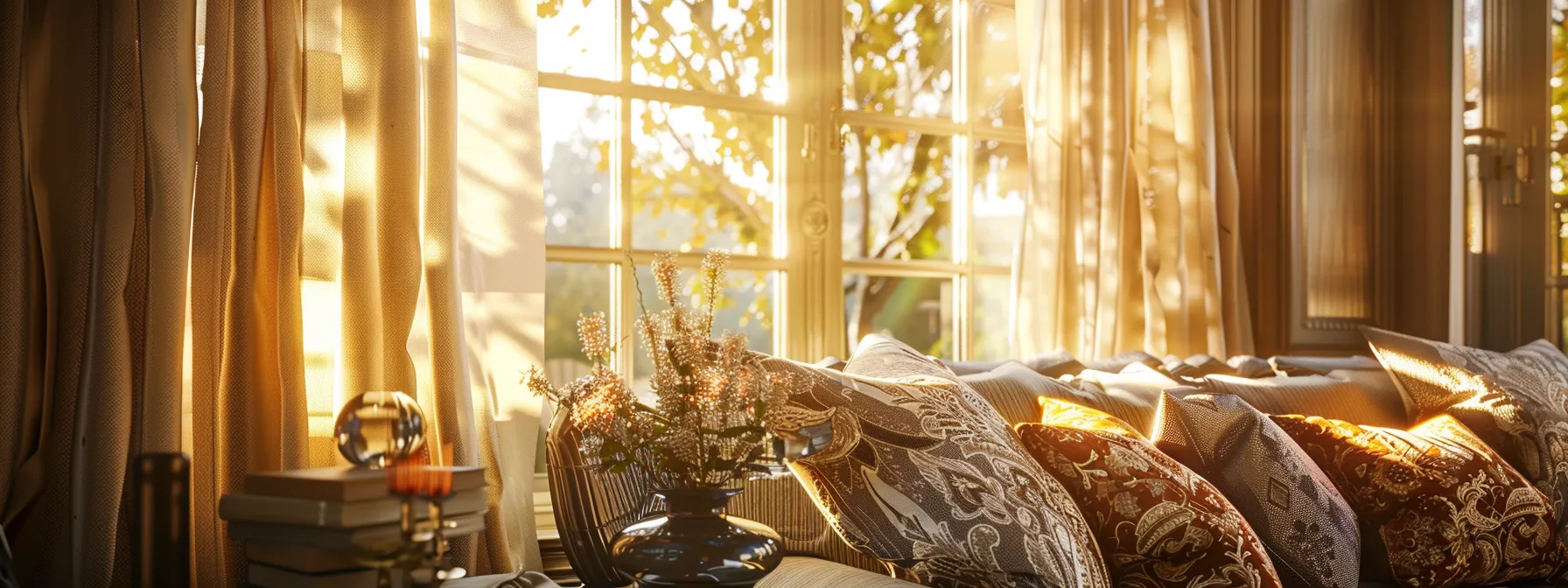
Curtain styles significantly impact a room's atmosphere, transforming windows and influencing energy flow. This section explores various curtain types, fabric choices, patterns, lengths, colors, and hardware that complement interior aesthetics. Understanding these elements helps create a cohesive design, enhancing the overall ambiance of living spaces.
Identify Different Curtain Types That Match Your Decor
Selecting curtain types that match decor requires consideration of taste, space, and daylight needs. Sheer curtains allow natural light to filter through, creating an airy atmosphere in smaller rooms. For a luxurious feel, velvet drapes add warmth and elegance, especially in formal living areas. In spaces with wood accents, linen or cotton curtains in earthy tones complement the natural elements while providing a relaxed ambiance.
Learn How Fabric Choices Impact Room Ambiance
Fabric choices profoundly impact room ambiance, influencing both aesthetics and functionality. Heavy fabrics like velvet create a cozy atmosphere in living rooms, while lightweight materials such as linen or cotton offer a breezy feel in kitchens. Sheer curtains allow natural light to filter through, brightening spaces and complementing existing decor elements like carpets or tablecloths. In bathrooms, water-resistant fabrics for shower curtains not only serve a practical purpose but also contribute to the overall design scheme.
Explore Patterns That Complement Interior Aesthetics
Patterns play a crucial role in complementing interior aesthetics, especially in bedroom curtains and window blinds. Designers often select textiles with patterns that harmonize with existing decor elements, such as bedding or wall coverings. For instance, subtle geometric patterns can add visual interest to a minimalist space, while floral prints may enhance a romantic atmosphere. The choice of pattern can extend beyond the window treatment itself, influencing the overall textile selection in the room, from throw pillows to the bed's apron.
Examine Curtain Length Options for Various Styles
Curtain length options significantly impact room aesthetics and functionality. In farmhouse bedroom designs, floor-length cotton curtains create a cozy atmosphere, while shorter café curtains allow natural light through glass windows. For a formal look, designers often choose curtains that pool slightly on the floor, complementing elegant furniture. Window valances offer a decorative touch without obstructing views, perfect for kitchens or sunrooms where full-length curtains might be impractical.
Assess Color Coordination for Cohesive Design
Color coordination plays a crucial role in creating a cohesive design throughout the home. In modern kitchens, a kitchen window valance in a complementary hue can tie together the room's color scheme, while grommet curtains in muted tones can enhance a bathroom's tranquil atmosphere. Designers often consider how sunlight interacts with drapery colors, selecting shades that either diffuse or amplify natural light to achieve the desired ambiance. By carefully matching curtain colors with existing decor elements, homeowners can create a harmonious flow from room to room, ensuring a unified and polished interior aesthetic.
Investigate the Role of Curtain Hardware in Style
Curtain hardware plays a crucial role in enhancing the overall design and beauty of a room. The right curtain rods, finials, and tiebacks can complement the couch, wall decor, and other furnishings, creating a cohesive look. For a ruffled curtain style, ornate hardware can add elegance, while sleek, minimalist rods suit modern interiors. Designers often select hardware that echoes existing metal finishes in the space, ensuring a harmonious aesthetic from the curtains to the furniture.
Align Curtains With Modern Interior Design Trends
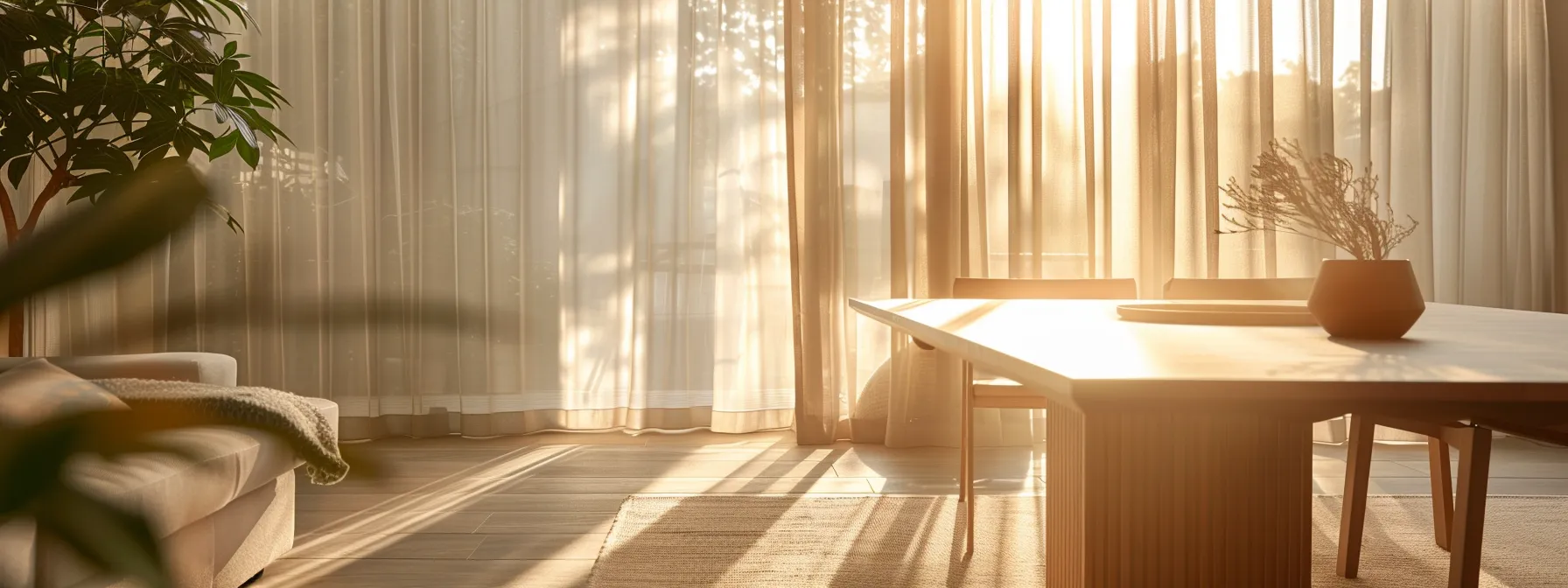
Modern interior design trends offer diverse curtain options for contemporary spaces. From minimalist styles to bold colors, sheer fabrics, and layering techniques, curtains play a crucial role in enhancing room aesthetics. Homeowners can explore Japanese-style curtains, sustainable materials like bamboo, and vintage designs to complement their dining room or window sill. These choices allow for creative expression while balancing light and privacy needs in modern interiors.
Understand Minimalist Curtain Trends for a Sleek Look
Minimalist curtain trends offer a sleek look that enhances sophistication in modern interiors. Designers often opt for simple, streamlined curtain rods paired with crisp, solid-colored fabrics to create a clean aesthetic in dining rooms and bedrooms alike. While boho curtains for bedroom spaces might incorporate subtle textures or patterns, minimalist styles typically feature smooth, unembellished surfaces that draw the eye without overwhelming the space. These curtains often hang straight, utilizing a pencil pleat or wave heading for a polished, contemporary appearance.
Consider Bold Colors for Eclectic Design Styles
Bold colors enliven eclectic design styles, allowing homeowners to spruce up their living spaces with vibrant curtains. Designers often pair deep hues with intricate embroidery patterns to create eye-catching focal points that draw attention from floor to ceiling. Iron curtain rods in contrasting shades complement these bold fabrics, adding an extra layer of visual interest to the room's overall aesthetic.
Explore Sheer Curtains in Contemporary Spaces
Sheer curtains offer a contemporary solution for modern interior design, allowing natural light to filter through while maintaining privacy. These lightweight polyester or silk fabrics create an airy atmosphere, complementing metal fixtures and minimalist decor. Designers often layer sheer curtains with blackout options, providing versatility in light control and enhancing the overall aesthetic of the space.
Analyze Layering Techniques for Depth and Texture
Layering techniques add depth and texture to modern interior designs, creating visual interest from floor to ceiling. Designers often combine sheer curtains with heavier drapes, using pocket curtain rods for a seamless look. In dining room curtains with a farmhouse aesthetic, layering rustic curtains for bedrooms over lightweight fabrics enhances texture while maintaining functionality. Skilled sewing techniques allow for custom layered designs, incorporating various materials and patterns to achieve a sophisticated, multi-dimensional appearance that complements contemporary spaces.
Evaluate Vintage Curtains to Enhance Retro Themes
Vintage curtains enhance retro themes by incorporating period-specific designs and fabrics into modern interiors. Double pleat curtains in linen or cotton, popular in mid-century homes, can add authentic charm while regulating heat and light. Designers often select curtains of appropriate length to match the era's aesthetic, such as floor-length drapes for formal spaces or cafe-style curtains for kitchens. By carefully choosing vintage-inspired patterns and textures, homeowners can create a cohesive retro atmosphere that blends seamlessly with contemporary elements.
Research Sustainable Fabric Choices for Modern Designs
Sustainable fabric choices for modern designs encompass eco-friendly materials that align with contemporary aesthetics. Designers increasingly incorporate organic cotton and linen in farmhouse curtains for dining rooms, combining rustic charm with environmental consciousness. Innovative weaving techniques produce durable, recyclable fabrics that maintain the elegance of traditional lace while reducing environmental impact. These sustainable options allow homeowners to create stylish, eco-friendly spaces without compromising on design or functionality.
Match Curtains to Traditional Interior Decor Styles
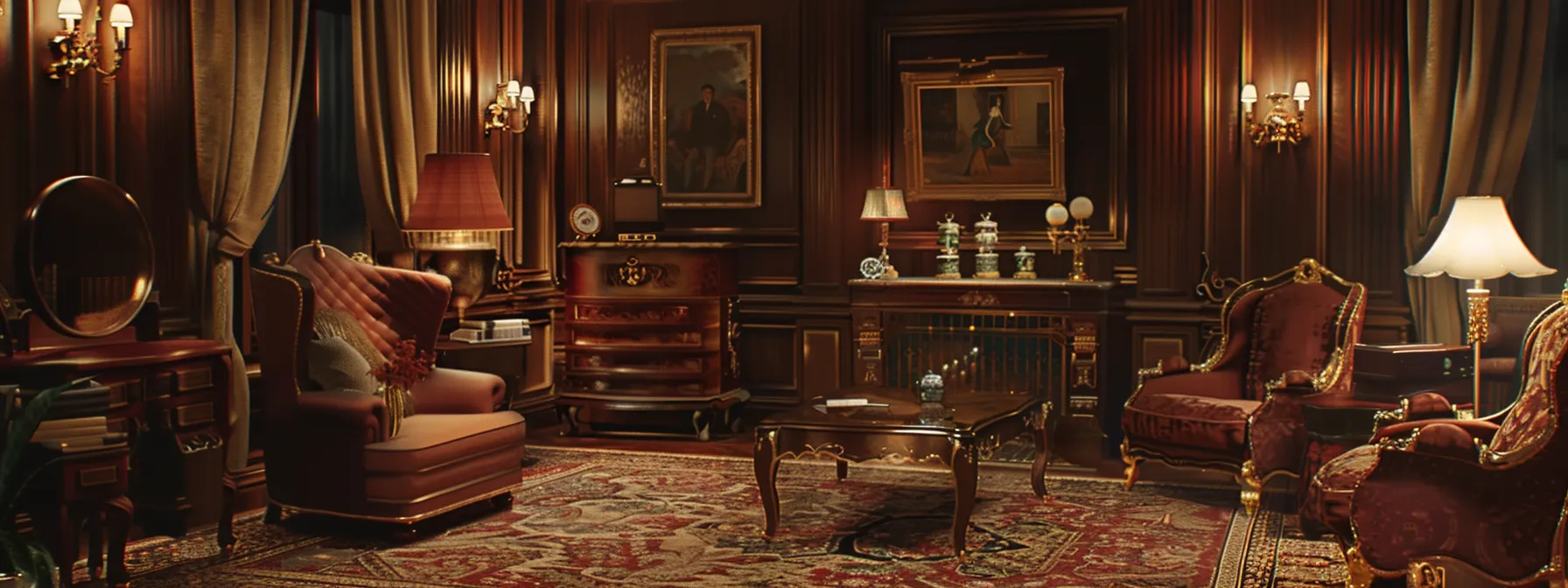
Traditional interior decor styles require careful curtain selection to maintain authenticity and elegance. This section explores suitable fabrics, patterns, and colors for classical themes, as well as window treatments that complement classic furniture. It also examines the importance of proportion in design and the use of drapery in formal spaces, helping homeowners create cohesive traditional interiors.
Identify Suitable Fabrics for Classical Interior Themes
Classical interior themes benefit from luxurious fabrics that exude elegance and sophistication. Silk, damask, and velvet are popular choices for traditional spaces, offering rich textures and a sense of opulence. These materials drape beautifully, creating flowing lines that complement ornate furniture and architectural details. Designers often select heavier fabrics for formal living rooms or dining areas, while lighter options like organza or fine linen work well in bedrooms or sitting rooms where a softer ambiance is desired.
Select Patterns That Reflect Period Styles
Traditional interior designs often incorporate patterns that reflect specific period styles, enhancing the authenticity of the decor. Designers select motifs such as floral prints, damask, or toile for curtains in formal living rooms, echoing popular patterns from historical eras. In Victorian-inspired spaces, intricate lace curtains or heavy brocade fabrics with ornate designs create an opulent atmosphere. For a more understated traditional look, subtle stripes or small-scale geometric patterns in muted colors complement classic furniture pieces without overwhelming the space.
Understand How Color Affects Traditional Settings
Color selection significantly influences the ambiance in traditional settings. Deep, rich hues like burgundy, forest green, and navy blue evoke a sense of timeless elegance, while softer shades such as cream, beige, and pale gold create a warm, inviting atmosphere. Designers often choose curtain colors that complement existing woodwork and furnishings, ensuring a harmonious blend throughout the space. By carefully considering the interplay of light and color, homeowners can enhance the traditional aesthetic while maintaining a balanced and cohesive interior design.
Review Window Treatments That Blend With Classic Furniture
Window treatments that blend with classic furniture often feature ornate details and rich textures. Heavy drapes with intricate pleats or swags complement traditional furnishings, while valances or cornices add a formal touch to windows. Designers frequently use layered treatments, combining sheer panels with heavier curtains to create depth and allow for light control. By selecting fabrics and patterns that echo the style of antique or reproduction furniture, homeowners can achieve a cohesive look that enhances the overall traditional aesthetic of their space.
Recognize the Importance of Proportion in Design
Proportion plays a crucial role in traditional interior design, especially when selecting curtains. Designers carefully consider the scale of window treatments in relation to room size, ceiling height, and existing furniture. Curtains that are too short or narrow can disrupt the visual balance, while oversized drapes may overwhelm smaller spaces. By choosing curtain lengths and widths that complement the room's dimensions and architectural features, homeowners create a harmonious and elegant traditional atmosphere.
Learn About the Use of Drapery in Formal Spaces
In formal spaces, drapery serves as a key element in creating an elegant and sophisticated atmosphere. Interior designers often select floor-length curtains with luxurious fabrics such as silk or velvet to frame windows and emphasize high ceilings. These curtains typically feature ornate details like tassels, tiebacks, or intricate embroidery, which complement traditional furniture and decor. The strategic use of drapery in formal rooms not only enhances the visual appeal but also provides practical benefits, such as light control and temperature regulation, contributing to the overall comfort and functionality of the space.
Create Cohesion With Curtains in Open Concept Homes
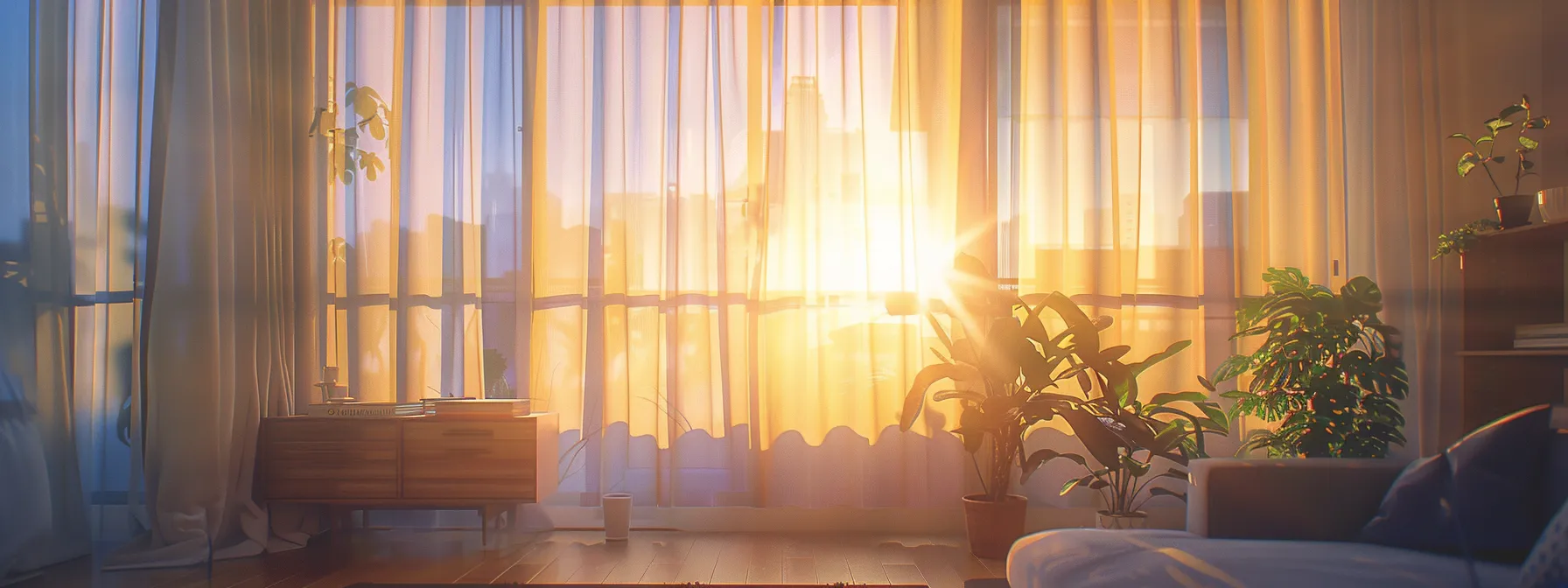
Curtains play a crucial role in creating cohesion in open concept homes. This section explores strategies for maintaining color consistency, unifying patterns, and selecting flexible curtain types across multiple spaces. It also examines how natural light influences curtain choices, the importance of fabric thickness in open areas, and effective layout planning to ensure a seamless flow throughout the home.
Discover Tips for Color Consistency Across Rooms
In open concept homes, maintaining color consistency across rooms through curtain selection creates a cohesive and harmonious atmosphere. Interior designers often recommend choosing a primary color palette for curtains that complements the overall design scheme, using variations in shade or texture to add visual interest while preserving unity. For example, in a space with neutral walls, curtains in different rooms might feature varying tones of blue, from light azure in the living area to deep navy in the dining space, tying the areas together without appearing monotonous.
Explore Patterns That Unify Multiple Spaces
In open concept homes, patterns play a crucial role in unifying multiple spaces while maintaining visual interest. Designers often select curtain patterns that complement each other across different areas, such as using geometric prints in varying scales or coordinating floral motifs. This approach creates a cohesive flow throughout the home, linking spaces visually without appearing overly uniform. By carefully balancing pattern types and sizes, homeowners can achieve a harmonious aesthetic that respects the unique function of each space within the open layout.
Choose Flexible Curtain Types for Varying Environments
Open concept homes benefit from flexible curtain types that adapt to varying environments. Designers often recommend dual-purpose curtains, such as those with adjustable opacity, to accommodate different lighting needs throughout the day. For example, sheer panels layered with blackout curtains allow homeowners to control privacy and light levels in living areas that transition from day to night use. This versatility ensures that curtains can effectively serve multiple functions within the open layout, maintaining a cohesive design while addressing the specific requirements of each space.
Assess How Natural Light Plays Into Your Choices
Natural light significantly influences curtain choices in open concept homes, affecting both functionality and aesthetics. Designers carefully consider the orientation of windows and the intensity of sunlight throughout the day when selecting curtain materials and colors. In areas with strong direct sunlight, they might opt for light-filtering fabrics that diffuse harsh rays while maintaining brightness. Conversely, rooms with limited natural light benefit from sheer or lightweight curtains that maximize illumination, creating a sense of openness and continuity across the space.
Investigate Fabric Thickness for Open Areas
Fabric thickness plays a crucial role in creating cohesion in open concept homes. Designers often select medium-weight fabrics for curtains in these spaces, as they provide a balance between light filtration and privacy. Heavier fabrics can be used strategically to define separate areas within the open layout, while lighter materials maintain a sense of flow and continuity. By carefully considering fabric weight, homeowners can achieve a harmonious look that unifies the space while addressing the functional needs of each area.
Plan Layouts That Flow With Curtain Placements
Effective layout planning ensures curtain placements flow seamlessly in open concept homes. Designers strategically position curtains to define distinct areas while maintaining visual continuity. They consider sight lines, traffic patterns, and furniture arrangements when determining curtain locations. By aligning curtain styles and placements with the overall layout, homeowners create a cohesive atmosphere that enhances the spaciousness of open floor plans.
Use Curtains as Focal Points in Your Design
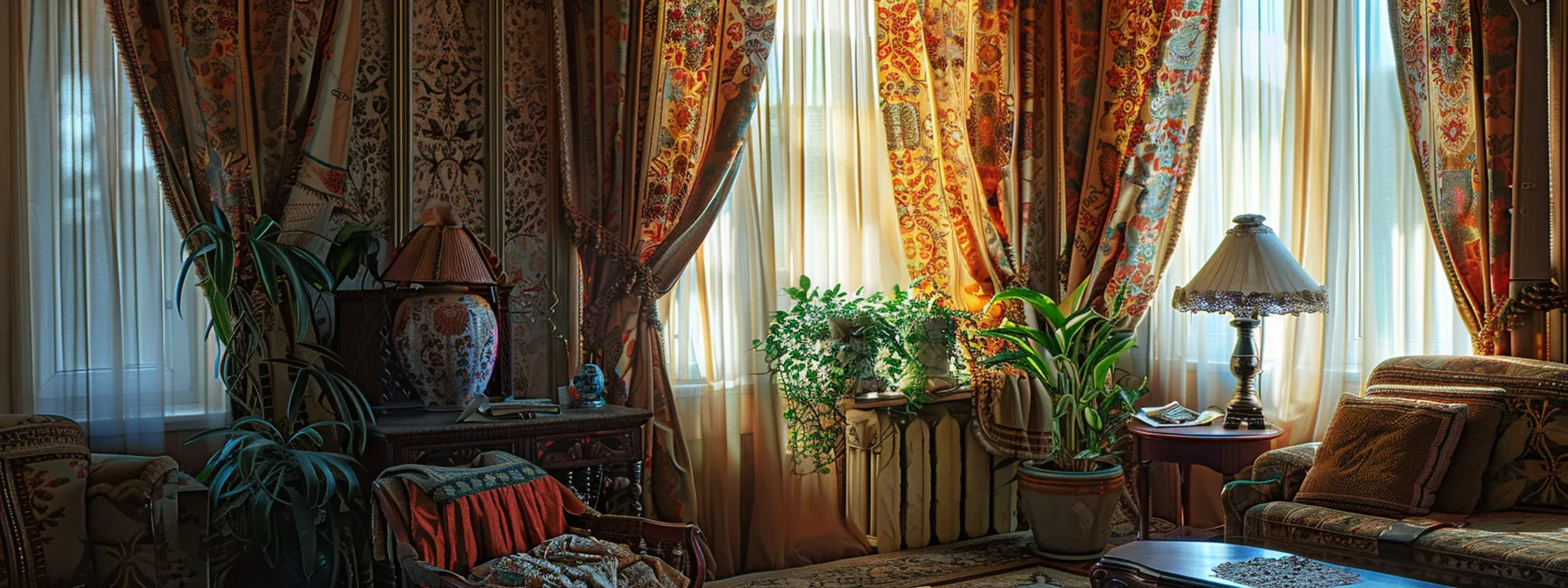
Curtains can serve as powerful focal points in interior design, drawing attention and enhancing visual interest. This section explores statement curtains, strategic positioning, unique hardware, texture mixing, framing techniques, and seasonal changes. By implementing these elements, homeowners can create eye-catching window treatments that elevate their overall design scheme and reflect personal style.
Explore Statement Curtains That Draw Attention
Statement curtains serve as powerful focal points in interior design, drawing attention and setting the tone for a room's aesthetic. Designers often select bold patterns, vibrant colors, or luxurious textures to create eye-catching window treatments that complement the overall decor. These standout curtains can transform ordinary windows into striking design elements, balancing other features in the space and reflecting the homeowner's personal style.
Learn to Position Curtains to Enhance Visual Interest
Strategic curtain positioning enhances visual interest and creates focal points in interior design. Designers often hang curtains higher and wider than the actual window frame to give the illusion of larger windows and higher ceilings. This technique draws the eye upward, making the room appear more spacious and elegant. By carefully considering the placement of curtain rods and the length of the panels, homeowners can create a dramatic effect that complements the room's architecture and overall design scheme.
Incorporate Unique Hardware for Added Charm
Unique hardware enhances curtains as focal points, adding charm and personality to window treatments. Interior designers select distinctive curtain rods, finials, and tiebacks that complement the room's style while making a statement. Antique brass rods with ornate finials create an elegant focal point in traditional spaces, while sleek chrome hardware adds a modern touch to contemporary designs. By choosing hardware that stands out, homeowners transform ordinary curtains into eye-catching design elements that elevate the entire room's aesthetic.
Get Ideas for Mixing and Matching Textures
Mixing and matching textures in curtains creates visually compelling focal points that elevate interior design. Designers often combine smooth silks with nubby linens or pair sheer panels with heavy velvets to add depth and interest to window treatments. This textural interplay not only enhances the curtains' aesthetic appeal but also contributes to the room's overall sensory experience, inviting touch and engaging the eye.
Examine Framing Techniques to Highlight Windows
Framing techniques enhance windows as focal points, drawing attention to their architectural features and surrounding decor. Designers often use layered curtains, combining sheer panels with heavier drapes, to create depth and visual interest. By extending curtain rods beyond the window frame and hanging them closer to the ceiling, they create an illusion of larger windows and higher ceilings. This technique not only highlights the windows but also adds a sense of grandeur to the space, making curtains an integral part of the room's overall design scheme.
Find Inspiration in Seasonal Curtain Changes
Seasonal curtain changes offer homeowners an opportunity to refresh their interior design and create dynamic focal points throughout the year. Interior designers often recommend selecting curtains that complement each season's color palette and atmosphere, such as light, airy fabrics for spring and summer, and rich, warm textures for fall and winter. By rotating curtains seasonally, homeowners can dramatically alter the mood of a room, keeping the space feeling fresh and aligned with the changing outdoor environment.
Conclusion
Matching curtains with interior design style is crucial for creating a cohesive and visually appealing home atmosphere. From fabric choices and patterns to colors and hardware, every element of curtain selection plays a vital role in complementing and enhancing the overall aesthetic of a space. Whether adhering to modern trends, traditional themes, or open concept layouts, carefully chosen curtains can unify design elements, control light, and serve as striking focal points. By understanding the principles of curtain selection and placement, homeowners can transform their living spaces, reflecting personal style while achieving a harmonious and inviting environment.




























